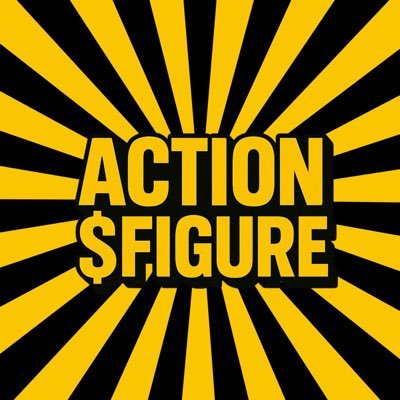


Octavia AI 價格VIA
您今天對 Octavia AI 感覺如何?
Octavia AI (VIA) 簡介
什麼是 Octavia?
Octavia 是一款 Web3 加密 AI 助手,旨在滿足加密社群不斷增長的需求。Octavia 以其深厚的加密知識、直接存取鏈上資訊和無縫網路連接為基礎,成為研究、交易和大量其他加密相關任務的關鍵資源。Octavia 同時連接網際網路和區塊鏈的獨特能力,使其能夠執行多項功能,包括進行深入研究、存取網路資源以及分析區塊鏈交易,並根據用戶偏好提供個人化協助。
Octavia 的核心功能在於其精密的 AI 能力,並透過內建記憶體系統進一步強化。該系統不僅能讓 Octavia 逐漸學習和適應用戶個別偏好,還確保提供日益個人化和高效的幫助。無論是透過 Discord、Telegram 或其他平台,Octavia 都能識別和驗證用戶身分,維持安全且直覺的互動。其區塊鏈原生設計以簡單的語言提供詳細交易分析,通俗易懂地闡明區塊鏈操作相關的複雜數據,進一步增強了用戶能力。Octavia 具有網路存取、精確運算和透過互動提高記憶力等功能,被定位為生動的 AI 助手,徹底改變用戶與加密貨幣領域的互動模式。
相關頁面
官方文件:https://docs.octavia.one/
官方網站: https://octavia.one/
Octavia 的運作方式為何?
Octavia 的核心整合了複雜的 AI 技術和區塊鏈,提供流暢且直觀的用戶體驗。收到訊息後,Octavia 會對其進行評估,並決定最佳的行動方案。對於簡單的查詢,它可以根據其龐大的知識庫提供即時回覆。然而,對於更複雜的查詢,Octavia 會開啟類似人類的研究過程,利用搜尋引擎收集相關資訊、造訪網站並理解內容,以提供準確而全面的答案。如有必要,可能會重複此過程,以確保所提供的資訊符合 Octavia 準確性和相關性的高標準。
此外,Octavia 與區塊鏈技術的整合,使其能夠直接從區塊鏈獲取即時數據。此功能可確保用戶收到有關代幣、錢包和合約的最新資訊。Octavia 的記憶系統仿照人類記憶,由區域、全域和固定記憶組成,使其能夠儲存用戶互動中的資訊、從新發現中學習,並保持其核心知識和個性。這種先進的記憶系統使 Octavia 能夠提供個人化協助,讓每位用戶獲得獨一無二的體驗,滿足他們的特定需求和偏好。
什麼是 VIA 代幣?
VIA 是 Octavia 平台的原生功能型代幣,具備多種用途,包括質押、治理、使用高級功能,以及參與獨特的「Train-to-Earn」計劃。透過質押 VIA 代幣,用戶可以獲得獎勵。該代幣還允許使用高級功能,透過自動交易和私人模式等強化用戶體驗。在治理方面,VIA 代幣持有者對平台的開發擁有發言權,允許社群針對變更提出建議和投票。最後,Train-to-Earn 概念獎勵用戶為改進 Octavia AI 所做的貢獻,打造出一個合作環境,讓每個人都從平台的成長和完善中受益。VIA 的總供應量為 1 億枚。
Octavia 的價格是由什麼決定?
與區塊鏈和加密貨幣市場中的任何資產一樣,Octavia 代幣(VIA)的價格從根本上受到供需原則的影響。影響 VIA 供需的因素包括 Web3 領域的最新消息、加密貨幣趨勢,以及加密貨幣採用和監管的整體情緒。隨著投資者和用戶密切關注加密貨幣圖表和 Octavia 價格預測,市場動態的變化通常會反映在其價格上。Octavia 與 Web3 生態系的整合,加上提供基於區塊鏈的先進解決方案的功能性,使其有望成為 2024 年及未來的一項利潤豐厚的加密貨幣投資。然而,市場波動、安全擔憂以及不斷變化的加密貨幣監管局勢,可能會對其估值產生重大影響。
此外,Octavia 的價格也受到其技術進步、安全措施,以及用戶群對加密貨幣採用率的影響。隨著該平台推出新功能和增強功能,這些最新發展將會刺激興趣和需求,從而影響 Octavia 的市場地位。對於想做出明智決策的投資者來說,有必要進行加密貨幣分析,深入研究 Octavia 表現和潛力。儘管能預期獲得高收益,但在投入 2024 年及未來的最佳加密貨幣投資之前,務必考慮加密貨幣風險,包括市場波動和安全問題。對於想探索數位資產投資複雜性的人來說,隨時掌握 Octavia 生態系和更廣泛的加密貨幣市場的最新消息和發展,將會是投資關鍵。
對投資或交易 Octavia 感興趣的人可能會想:在哪裡可以購買 VIA?您可以在 Bitget 等領先交易所中購買 VIA,Bitget 為加密貨幣愛好者提供了一個安全且用戶友善的平台。
Octavia AI 的 AI 分析報告
今日 Octavia AI 價格 TWD
Octavia AI 價格歷史(TWD)
 最低價
最低價 最高價
最高價 
Octavia AI 的最高價格是多少?
Octavia AI 的最低價格是多少?
Octavia AI 價格預測
VIA 在 2026 的價格是多少?
VIA 在 2031 的價格是多少?
常見問題
Octavia AI 的目前價格是多少?
Octavia AI 的 24 小時交易量是多少?
Octavia AI 的歷史最高價是多少?
我可以在 Bitget 上購買 Octavia AI 嗎?
我可以透過投資 Octavia AI 獲得穩定的收入嗎?
我在哪裡能以最低的費用購買 Octavia AI?
Octavia AI 持幣分布集中度
Octavia AI 地址持有時長分布

全球 Octavia AI 價格
- 1
- 2
- 3
- 4
- 5
如何購買 Octavia AI(VIA)

建立您的免費 Bitget 帳戶

認證您的帳戶

將 Octavia AI 兌換為 VIA
交易 VIA 永續合約
在 Bitget 上註冊並購買 USDT 或 VIA 後,您可以開始交易衍生品,包括 VIA 合約和槓桿交易,增加收益。
VIA 的目前價格為 NT$0.8189,24 小時價格變化為 -1.94%。交易者可透過做多或做空 VIA 合約獲利。
您可以在哪裡購買 Octavia AI(VIA)?
影片部分 - 快速認證、快速交易

Octavia AI 評級
Bitget 觀點





相關資產
關於 Octavia AI 的更多資訊
交易
理財

































